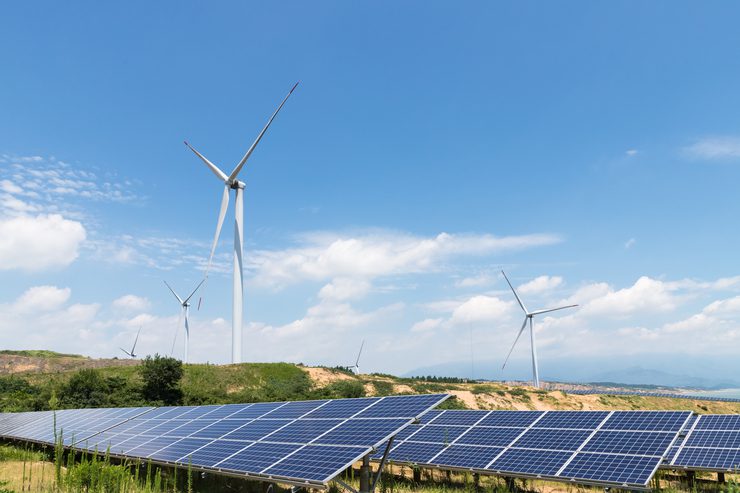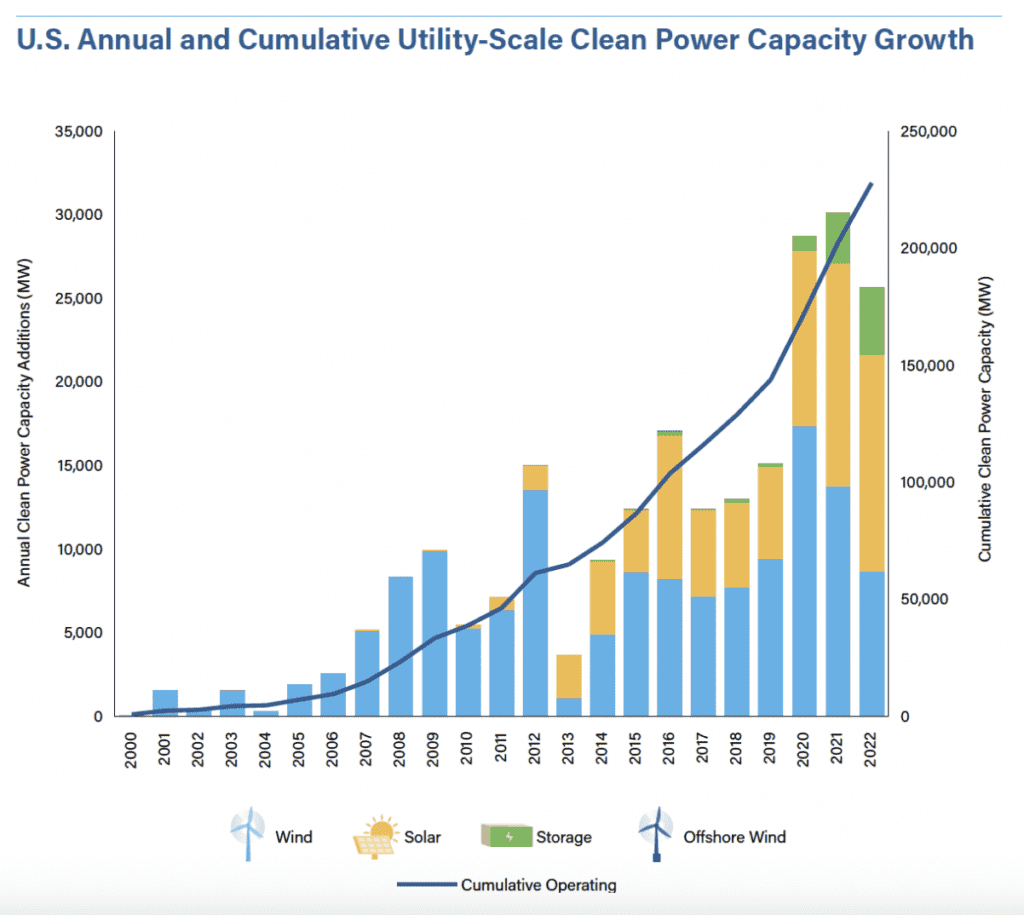Growth Slows, but U.S. Renewable Energy Installs at Third-Highest Level in 2022
Credit to Author: Darrell Proctor| Date: Mon, 22 May 2023 15:11:12 +0000

The American Clean Power Association (ACP) in a new report said installations of energy storage, along with wind and solar power capacity, were at the third-highest level on record in 2022, with more than 25 GW of new clean power installed cross the U.S.
But challenges to clean energy deployment remain. The group’s “Clean Power Annual Market Report for 2022,” released Monday along with ACP’s “Clean Power Quarterly Market Report for Q1 2023,” said employment issues during the past two years, and a “historically low Q1 2023,” highlight “the continued headwinds facing the industry.”
“The clean energy revolution is underway,” said ACP CEO Jason Grumet. “We have the technology, financial capital and workforce to power our economy with clean, affordable and secure energy. There is broad bipartisan support for American energy innovation. But the clean energy transition will not succeed unless Congress and governors enable the siting and construction of new energy facilities and support the build out of transmission that is required to bring clean power to the people.”
ACP published the report (an interactive version is here) ahead of this week’s CLEANPOWER 2023 conference and exhibition in New Orleans, Louisiana. The ACP-sponsored event brings together several technology groups across renewable energy, including onshore and offshore wind; solar; energy storage; and transmission.
The group in its report noted that after the Inflation Reduction Act (IRA) became law in August 2022, renewable energy saw what ACP deemed “record levels of announced activity,” with the development pipeline increasing to almost 140 GW by the end of March 2023. That represents an 11% year-over-year increase. The group, though, said it remains to be seen how much of that pipeline actually enters operation, as installations last year slowed for the first time since 2017.
ACP said various issues are delaying deployment of more than 60 GW of renewable energy projects through the first quarter of this year.
Solid Growth in Energy Storage
Energy storage was a bright spot in 2022, with 4 GW of capacity and 12 GWh of storage commissioned, an 80% jump in capacity compared to the prior year.
Texas led the nation with more than 9 GW of renewable energy installed in 2022, more than twice the amount of any other state. Also of note, South Dakota and Iowa each generated more than 50% of their total electricity from clean power. Texas continues to lead the U.S. in terms of operating clean power capacity, with 55 GW installed.

The group said hybrid project installations—those using two or more technologies—were 60% higher last year than in 2021, reaching a new high with about 6 GW of new projects coming online.
The 140-GW development pipeline is led by solar power (59%), followed by onshore wind (15%), battery energy storage (14%), and then offshore wind.
The group said that at year-end 2022, about 228 GW of clean energy was online across the U.S., with 4 GW added in the first three months of this year. ACP said that despite an overall slowdown last year, renewable energy still accounted for almost 80% of all new generation added to the U.S. grid.
ACP said delays in 2022 impacted more than 50 GW of projects in late-stage development. That figure rose to 63.3 GW by the end of March this year. The group said that those projects on average face delays of six months or more, primarily due to several factors, including:
- Unclear permitting timelines.
- Trade policy uncertainty.
- Transmission shortages.
- Difficulties sourcing solar panels.
- Unresolved IRA implementation.
- Interconnection queue challenges.
Jesse Grossman, chairman and CEO of Soltage, a New Jersey-based renewable energy provider, earlier this year told POWER, “Despite the significant boost to renewables from the Inflation Reduction Act, bottlenecks for renewable energy adoption, including the inability of the current distribution and transmission infrastructure to connect renewable energy projects across the U.S. at speed, will remain in 2023. A two-year solar project development lifecycle in 2005 would take 4+ years to complete today, partially due to increased interconnection queues. Moving forward, we hope to see federal level enforcement over utility infrastructure spending and transmission buildout as well as increased storage development to reduce pressures caused by the rapid electrification of the U.S. grid.”
ACP group said about 1,741 GW of generation capacity was waiting in interconnection queues at the end of last year. It also warned that slower growth in renewable energy threatens the Biden administration’s net-zero carbon goals, saying, “Maintaining last year’s project installation volume would provide only 30% of what is needed to reach a net-zero grid by 2035.”
ACP said there are now 550 U.S. manufacturing facilities dedicated to producing components and parts for wind, solar, and storage projects. It noted that 47 new manufacturing facilities or expansions have been announced since the passage of the IRA.
—Darrell Proctor is a senior associate editor for POWER (@POWERmagazine).
The post Growth Slows, but U.S. Renewable Energy Installs at Third-Highest Level in 2022 appeared first on POWER Magazine.